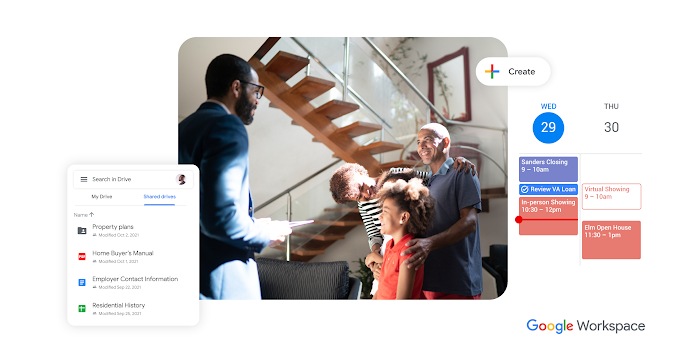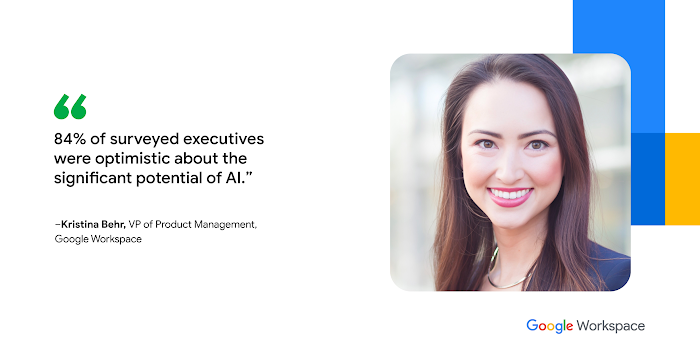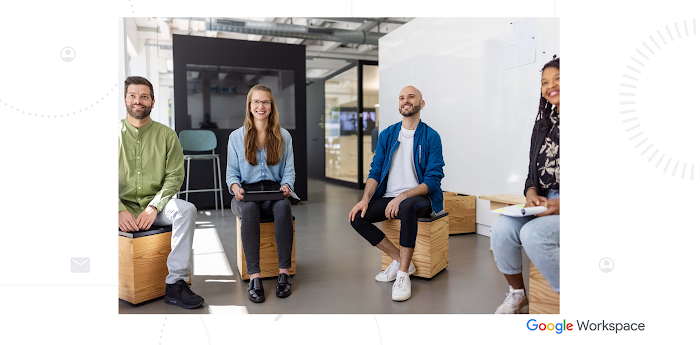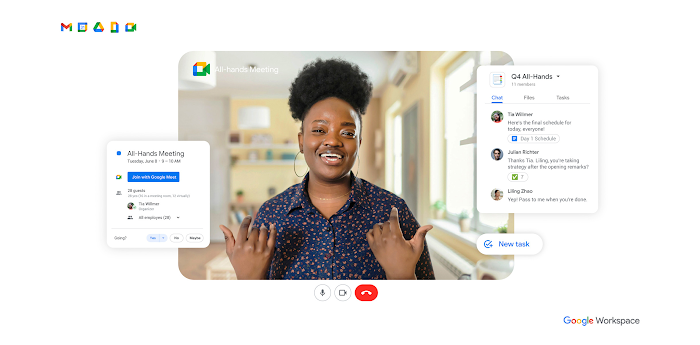Reimagining physical spaces to foster connection
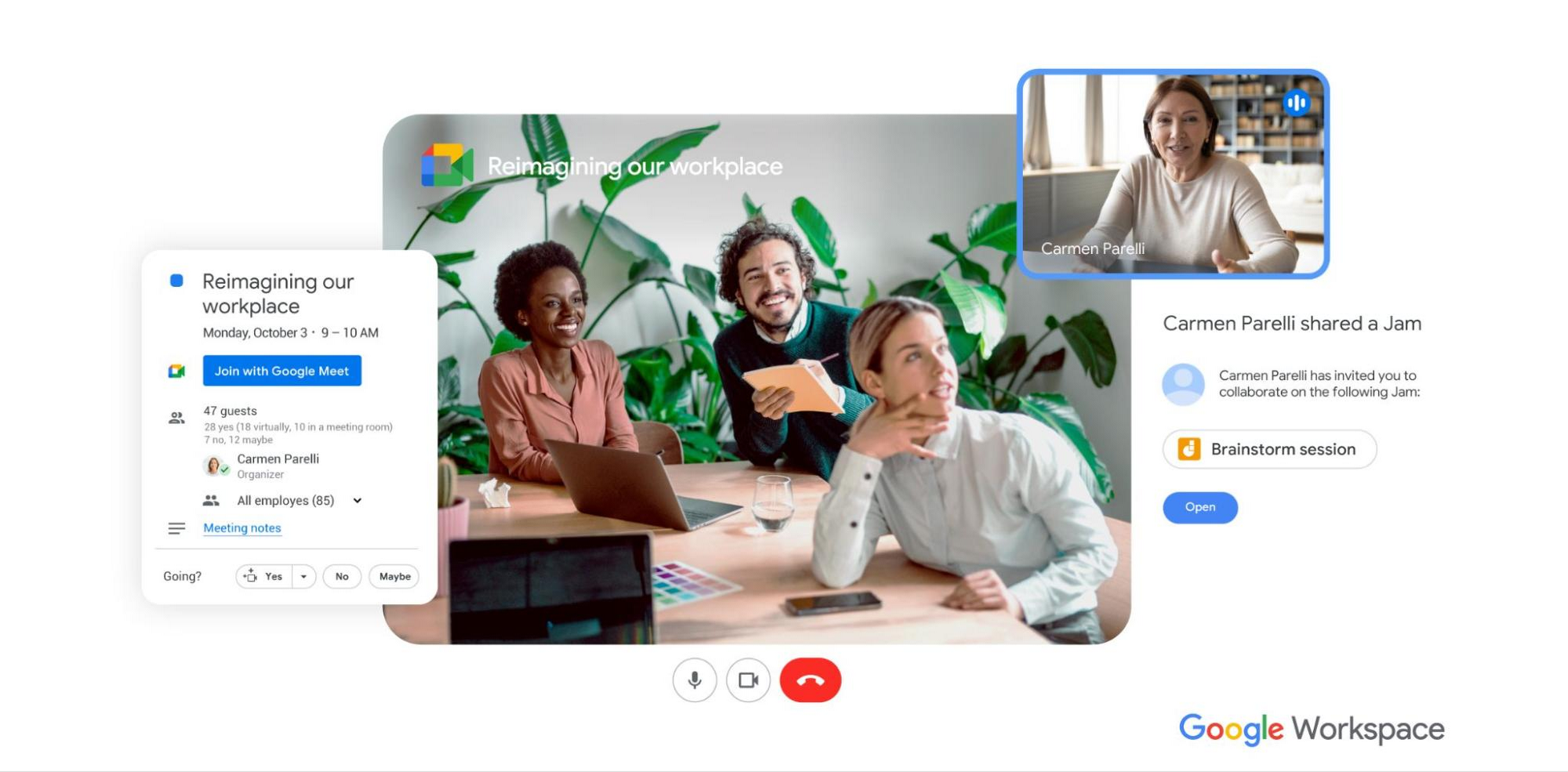
Michelle Kaufmann
Director, Real Estate Research and Development, Google
While the way we work has fundamentally changed over the past few decades, many aspects of offices and workspaces have remained the same. Given the impact work environments have on productivity and employee experience, physical workspaces have to evolve to meet the needs of today’s workforce. In fact, a Gartner survey found that employees who are satisfied with their physical workspace are 16% more productive and 30% more attracted to their company than competitors.
At Google, my team designs workplaces that aim to stay functional and vibrant for many years to come, even as the ways we connect and work continue to evolve. When designing the first campus built by Google, we focused on creating a space that supports everything from events, socialization, and learning. There were a number of challenges to address, like ensuring there’s quiet space for individual focus while also ensuring there are places to collaborate with colleagues you work with but don’t sit near. The goal was to find flexible, spatial solutions that can adapt as our needs change.
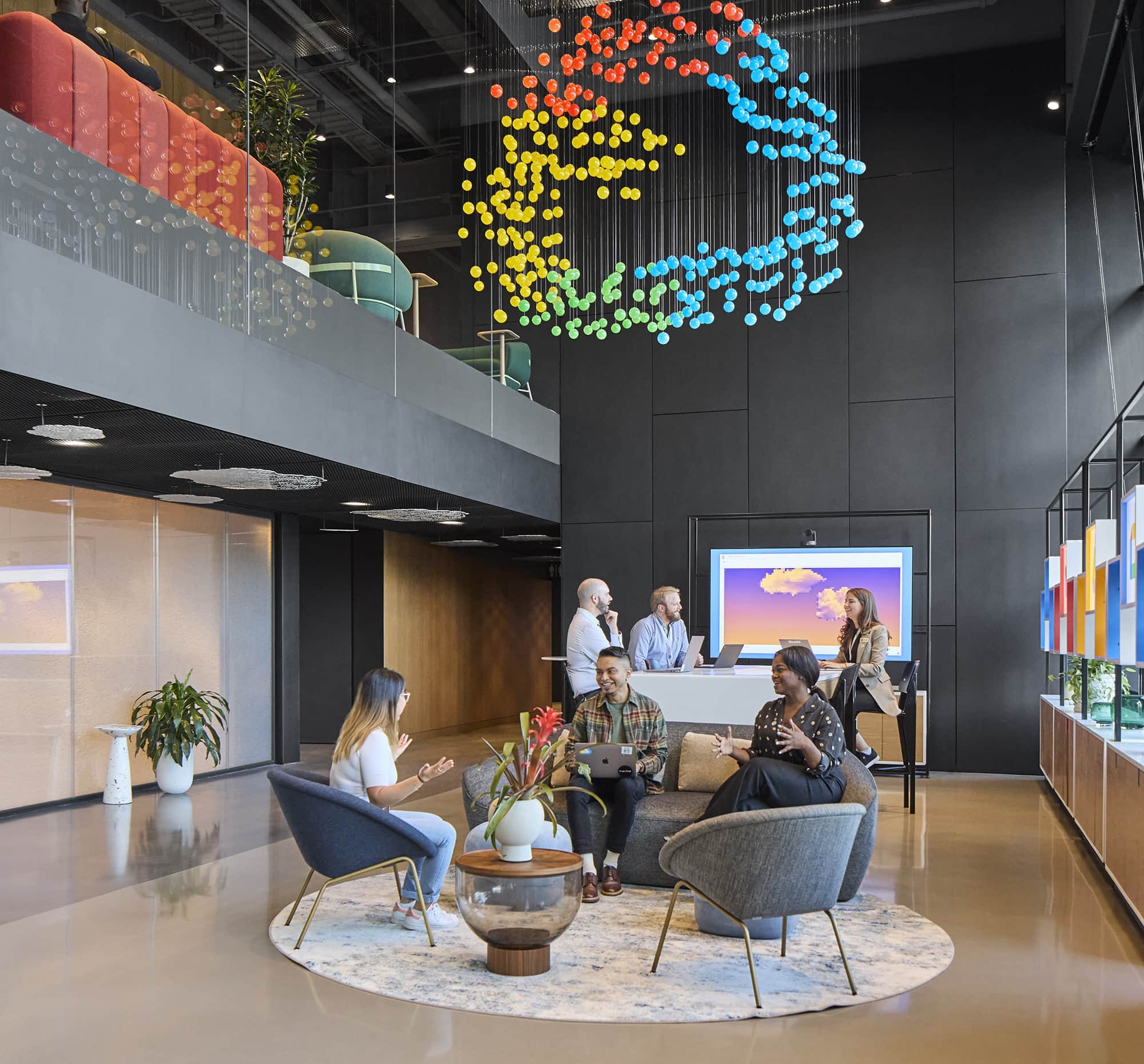

Rethinking the intersection of the physical and digital
Of course, the design and layout of the office isn’t the only thing that needs to evolve. We also need to reframe our concept of the workplace itself. New models of work have necessitated that organizations define the workplace as something that extends beyond the four walls of an office building. Employees need to be able to connect with their colleagues in another city as easily as they can with the ones sitting next to them, made possible with digital tools that enable both real-time and anytime communication and collaboration.
The new era of hybrid work needs to seamlessly blend the physical and digital workspace. At Google, we believe in the energy of being together in the same physical space, but we also heavily rely on our digital tools that enable a flexible approach that maximizes creativity, productivity, connectedness, and wellbeing. Our teams rely on Google Workspace to connect, create, and collaborate from anywhere; it provides a single integrated solution across Gmail, Chat and Spaces, Google Meet, Docs, Sheets, Slides, and more. As workplace norms continue to evolve, savvy business leaders will leverage digital solutions like Workspace with physical solutions to meet the needs of their employees and help them feel connected — no matter where they’re working.
The office as a hub for collaboration and connection
It’s clear at Google and elsewhere that today’s workers are approaching their time in the physical office with greater intentionality. Studies show that connection and collaboration are the top motivators for choosing to work at the office versus at home. Destination-worthy offices that transform into social and collaboration hubs are necessary for creating environments that people want to work in.
Leveraging research from the past decade, we’ve found that Google employees work best when they’re physically close to colleagues they work with most often: not just with their immediate team members, but with colleagues from adjacent teams as well. This is what we call their “neighborhoods.” We found that when a neighborhood of employees is distributed across two buildings — even if they are next door to each other — they feel less connected and lose casual run-ins and organic connections. With our new Bay View and Charleston East campuses, our approach was to support teams and team members under the same roof for a sense of community and belonging. The campuses offer many types of collaboration spaces on the vibrant main level: enclosed meeting rooms, sprint spaces, workshop areas, lounges, and various interior courtyard spaces to support every style of collaboration.
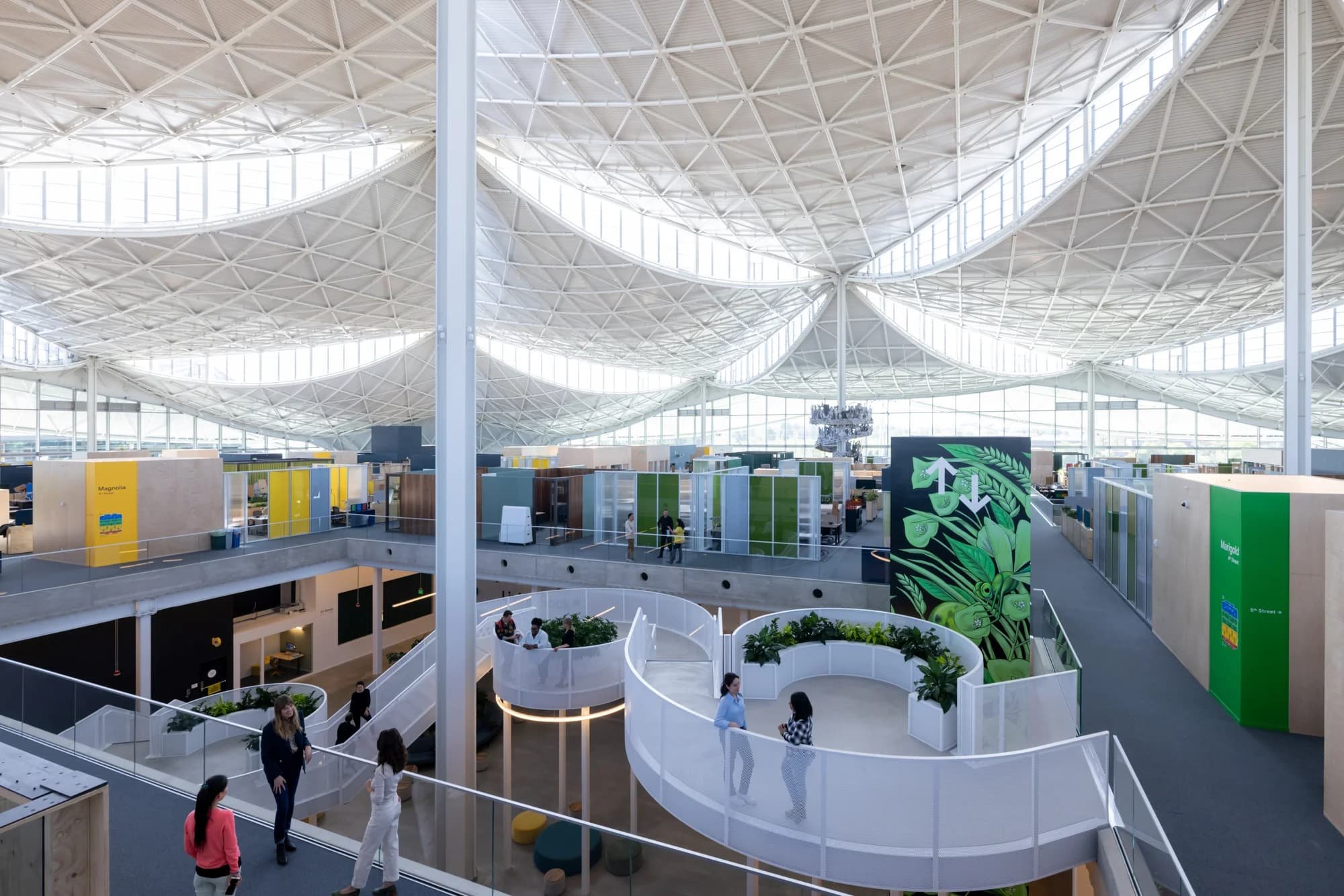

The design of your team’s space is instrumental to protecting deep individual focus while also facilitating easy, organic collaboration. Providing employees with an array of comfortable, team-owned spaces for any meeting size can help cultivate a sense of belonging and team-building.
It’s also vital that people have access to a quiet environment where they can focus on solo work. Yet, many office concepts have one singular space for both active collaboration and heads-down solo work. This causes distraction and impacts collaboration. I recommend setting up focus areas separately from collaboration spaces to allow all types of work to happen seamlessly.
Blending physical and digital experiences
Providing tools that deliver a consistent employee experience anywhere and at any time can bridge the gap between teams, no matter where they're working from. Employees also need tools that simply help them get their work done. Being able to easily move between applications and quickly access information from any device is key. Creating a dedicated Space for shared projects is one way to provide distributed teams with a central hub to search and share files across applications, assign tasks, brainstorm, and give feedback at any time, with a persistent record of all interactions. Similarly, the ability to quickly pivot to a Meet call from Gmail, Chat, or Docs ensures they don’t lose momentum when collaborating from anywhere.
Collaboration works best when employees can see and be seen, and hear and be heard on any project. However, this is not always easy when the collaborators are in different locations. Most people know what it’s like to be on a conference call with too much background noise. Meeting software with noise cancellation capabilities mitigates these issues by amplifying voices and automatically identifying and limiting distracting sounds. Digital whiteboard tools like Jamboard enable all team members to participate as if they’re in the same room (Editorial note: Jamboard is winding down in 2024, learn more). When distance makes it hard to get everyone on the same page, teams can save time by creating agendas and notes directly inside meeting invitations, while AI-powered document summaries, templates, and contextual information bring people up to speed, so they can get down to work.
Google Workspace is also working on improving and developing new digital tools for immersive connection from any location. Speaker spotlight in Slides places a presenter’s video directly within the content in a meeting. And automatic video framing in Meet will center participants in their video tile and allow them to reposition at any time. These features help collapse boundaries between people, apps, and locations.
Keeping employees in the loop
With workplaces, workstyles, office norms, and digital tools constantly evolving, we’re all learning as we go. And that progressive learning is key to future success. At Google, we maintain open channels of communication with employees to ensure we’re meeting their evolving needs and learning together. We created a Google Site dedicated to sharing our roadmap and progress and set up a dedicated space where employees can contribute to the conversation.
All-hands meetings are also held regularly to update everyone on the latest workspace changes, ensuring employees are in the loop. These meetings can be accompanied by blue-sky brainstorming sessions to get people excited about the possibilities of what the office can be and ensure the teams are helping to co-create this exciting new future.
The workplace is evolving
It’s helpful to remember that what works today will not necessarily work five years, two years, or even one year from now. Thinking about redefining the workplace as extending beyond the four walls of the office building will ensure you’re prepared for whatever the future may hold.
We’ve seen how remote work gives employees new-found freedom, while in-person connection continues to be irreplaceably special, especially for sustained innovation and complex problem-solving. The ideal hybrid work environment will empower employees in the office to collaborate and connect easily while giving employees outside of the office the tools they need to feel like a vital part of the team. When the physical and digital spaces that make up a workspace complement each other, it will help employees feel happier, more respected, and better prepared to do their best work — together.
